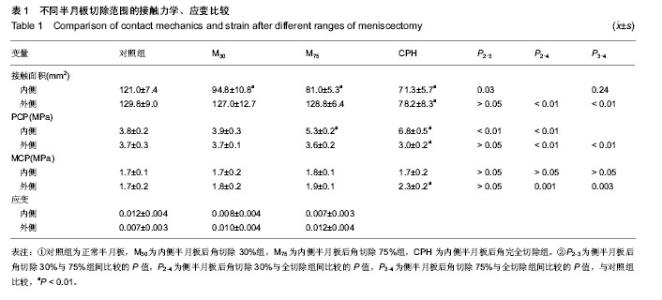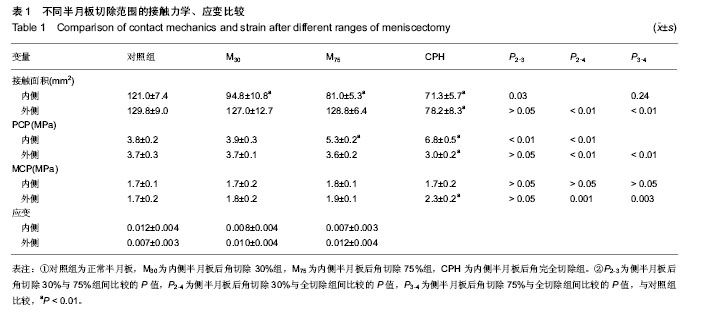| [1] Taylor SA, Rodeo SA. Augmentation techniques for isolated meniscal tears.Curr Rev Musculoskelet Med. 2013;6(2): 95-101.
[2] Laible C, Stein DA, Kiridly DN.Meniscal repair.J Am Acad Orthop Surg.2013;21(4):204-213.
[3] Jung YH, Choi NH, Oh JS, et al. All-inside repair for a root tear of the medial meniscus using a suture anchor. Am J Sports Med. 2012;40(6):1406-1411.
[4] Brucker PU, Favre P, Puskas GJ, et al. Tensile and shear loading stability of all-inside meniscal repairs: an in vitro biomechanical evaluation. Am J Sports Med. 2010;38(9): 1838-1844.
[5] Freymann U, Endres M, Goldmann U, et al. Toward scaffold-based meniscus repair: effect of human serum, hyaluronic acid and TGF-ß3 on cell recruitment and re-differentiation.Osteoarthritis Cartilage. 2013;21(5):773-781.
[6] Buchcic P, Dom?alski M, Mas?oń A, et al. Reliability of clinical evaluation of meniscus repair with the all-inside technique. Ortop Traumatol Rehabil. 2013;15(2):131-137.
[7] Maher SA, Rodeo SA, Doty SB, et al. Evaluation of a porous polyurethane scaffold in a partial meniscal defect ovine model. Arthroscopy. 2010;26(11):1510-1519.
[8] Choi NH, Kim TH, et al. Meniscal repair for radial tears of the midbody of the lateral meniscus. Am J Sports Med. 2010; 38(12): 2472-2476.
[9] Johnson KA, Francis DJ, Manley PA, et al, Comparison ofthe effects of caudal pole hemi-meniscectomy and complete medial meniscectomy in the canine stifle joint. Am J Vet Res. 2004;65:1053-1060.
[10] Nepple JJ, Dunn WR, Wright RW. Meniscal repair outcomes at greater than five years: a systematic literature review and meta-analysis. J Bone Joint Surg Am. 2012;94(24): 2222-2227.
[11] Osawa A, Harner CD, Gharaibeh B, et al. The use of blood vessel-derived stem cells for meniscal regeneration and repair. Med Sci Sports Exerc. 2013;45(5):813-823.
[12] Ruiz-Ibán MÁ, Diaz-Heredia J, Elías-Martín E, et al. Repair of meniscal tears associated with tibial plateau fractures: a review of 15 cases. Am J Sports Med. 2012;40(10): 2289-2295.
[13] Abrams GD, Frank RM, Gupta AK, et al. Trends in meniscus repair and meniscectomy in the United States, 2005-2011. Am J Sports Med. 2013;41(10):2333-2339.
[14] Dave LY, Caborn DN.Outside-in meniscus repair: the last 25 years.Sports Med Arthrosc. 2012;20(2):77-85.
[15] Pozzi A, Tonks C, Ling H. Femorotibial contact mechanics and medial meniscal strain after serial meniscectomies in the dog stifle. Vet Surg. 2010;39(4):482-488.
[16] Logan M, Watts M, Owen J, et al. Meniscal repair in the elite athlete results of 45 repairs with a minimum 5-year follow-up. Am J Sports Med. 2009;37:1131-1134.
[17] Pozzi A, Kim SE, Lewis DD. Effect of transection of the caudal menisco-tibial ligament on medial femorotibial contact mechanics. Vet Surg. 2010;39(4):489-495.
[18] Pozzi A, Litsky AS, Field J, et al. Pressure distributions on the medial tibial plateau after medial meniscal surgery and tibial plateau levelling osteotomy in dogs. Vet Comp Orthop Traumatol. 2008;21:8-14.
[19] Zielinska B, Donahue TL. 3D finite element model of meniscectomy: changes in joint contact behavior. J Biomech Eng. 2006;128:115-123.
[20] Kisiday JD, Vanderploeg EJ, McIlwraith CW, et al. Mechanical injury of explants from the articulating surface of the inner meniscus. Arch Biochem Biophys. 2010;494(2):138-144.
[21] Metcalfe AJ, Stewart C, Postans N, et al. The effect of osteoarthritis of the knee on the biomechanics of other joints in the lower limbs. Bone Joint J. 2013;95-B(3):348-353.
[22] Wright T. Biomechanical factors in osteoarthritis: the effects of joint instability. HSS J. 2012;8(1):15-17.
[23] Haba Y, Lindner T, Fritsche A, et al. Relationship between mechanical properties and bone mineral density of human femoral bone retrieved from patients with osteoarthritis. Open Orthop J, 2012,6:458-463.
[24] Andriacchi TP, Mundermann A, Smith RL, et al. A framework for the in-vivo pathomechanics of osteoarthritis at the knee. Ann Biomed Eng. 2004;32:447-457.
[25] Cho JH.A Modified Outside-in Suture Technique for Repair of the Middle Segment of the Meniscus Using a Spinal Needle. Knee Surg Relat Res. 2014;26(1):43-47.
[26] Jones RS, Keene GC, Learmonth DJ, et al. Direct measurement of hoop strains in the intact and torn human medial meniscus. Clin Biomech (Bristol,Avon). 1996;11: 295-300.
[27] McNulty MA, Loeser RF, Davey C, et al. Histopathology of naturally occurring and surgically induced osteoarthritis in mice. Osteoarthritis Cartilage. 2012;20(8):949-956.
[28] [Nishimuta JF, Levenston ME. Response of cartilage and meniscus tissue explants to in vitro compressive overload.Osteoarthritis Cartilage. 2012;20(5):422-429.
[29] Buck RJ, Wyman BT, Hellio Le, et al. Using ordered values of subregional cartilage thickness change increases sensitivity in detecting risk factors for osteoarthritis progression. Osteoarthritis Cartilage. 2011;19(3):302-308.
[30] Wirth W, Buck R, Nevitt M, et al. MRI-based extended ordered values more efficiently differentiate cartilage loss in knees with and without joint space narrowing than region-specific approaches using MRI or radiography--data from the OA initiative. Osteoarthritis Cartilage. 2011;19(6): 689-699. |

